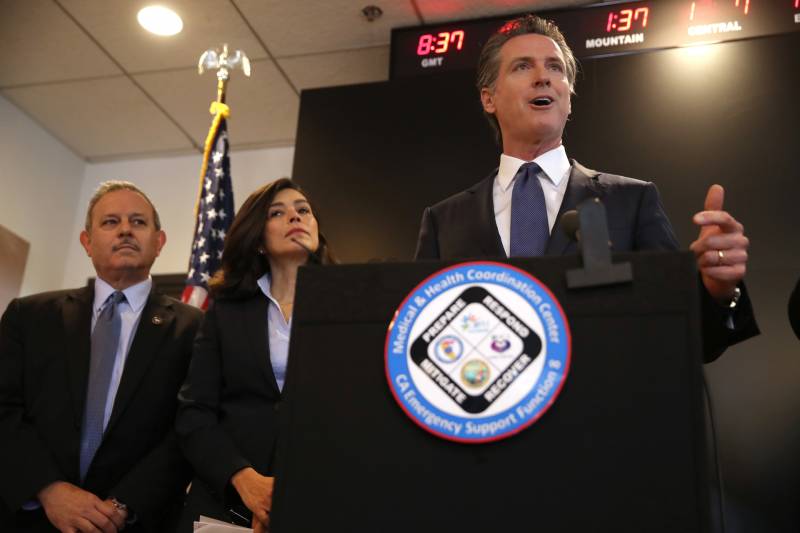California lacks enough swabs and other vital supplies necessary to perform all the COVID-19 tests it requires.
Newsom said he spoke with President Donald Trump, who promised to send California a minimum of 100,000 swabs this week, followed by an additional 250,000 next week.
“He said the third week to expect to see a substantial increase above the 250,000,” Newsom said. “That was a very good phone call.”
For weeks, both Democratic and Republic governors have publicly chided the Trump administration for a slow rollout of tests and bristled at claims that the test supply was enough to move toward restarting the economy.
Newsom also acknowledged another shortfall in California. The state has “struggled” to provide testing to communities spread out across the vast expanse of rural California and to people of color, who live in dense urban areas.
He called the issue “vexing and frustrating” and announced plans to open 86 centers to service people who are living in what he called “testing deserts.” COVID-19 has disproportionately affected African Americans and Latinos in the state.
Training an “Army” of Contact Tracers
Public health officials and hospitals are also preparing to train what Newsom called an “army” of 10,000 “contact tracers,” who will play a vital role after the state is reopened in identifying, and following, any future coronavirus outbreaks.
That’s a major lift, albeit one health officials say is necessary. On April 10 — a mere two weeks ago — the Association of State and Territorial Health Officials sent a letter to Congress saying there are 2,200 contact tracers across the entire U.S.
He said the state will launch an online academy to help train the contact tracers.
After an individual tests positive for COVID-19, contact tracers perform the labor-intensive work of calling all of the person’s friends, co-workers, relatives or even servers they may have interacted with at a restaurant to see if they are sick and recommend testing.
Public health officials say a larger, trained network of contact tracers will be absolutely vital after the statewide stay-at-home order is lifted. Without a vaccine or reliable therapy, officials say, the risk of a “second wave” of coronavirus infections remains a grave threat.
Newsom also announced certain elective surgeries will begin again in hospitals statewide. Some individual hospitals — like UCSF — began performing limited surgeries recently.
Newsom said California will now resume procedures and preventative care services that were delayed because of the pandemic, including heart valve replacements, colonoscopies, angioplasty and tumor removals.
The governor’s announcement that all of California’s hospital systems now have the green light to perform these operations is the first easing of COVID-19 restrictions since they were put in place back in March. Also, he said that hospitalizations and the number of new people entering intensive care both dipped yesterday.
Newsom said all of these signs point to state “flattening the curve,” but that he is using science and a ‘health-first’ framework to approach any modification of current stay-at-home orders.
